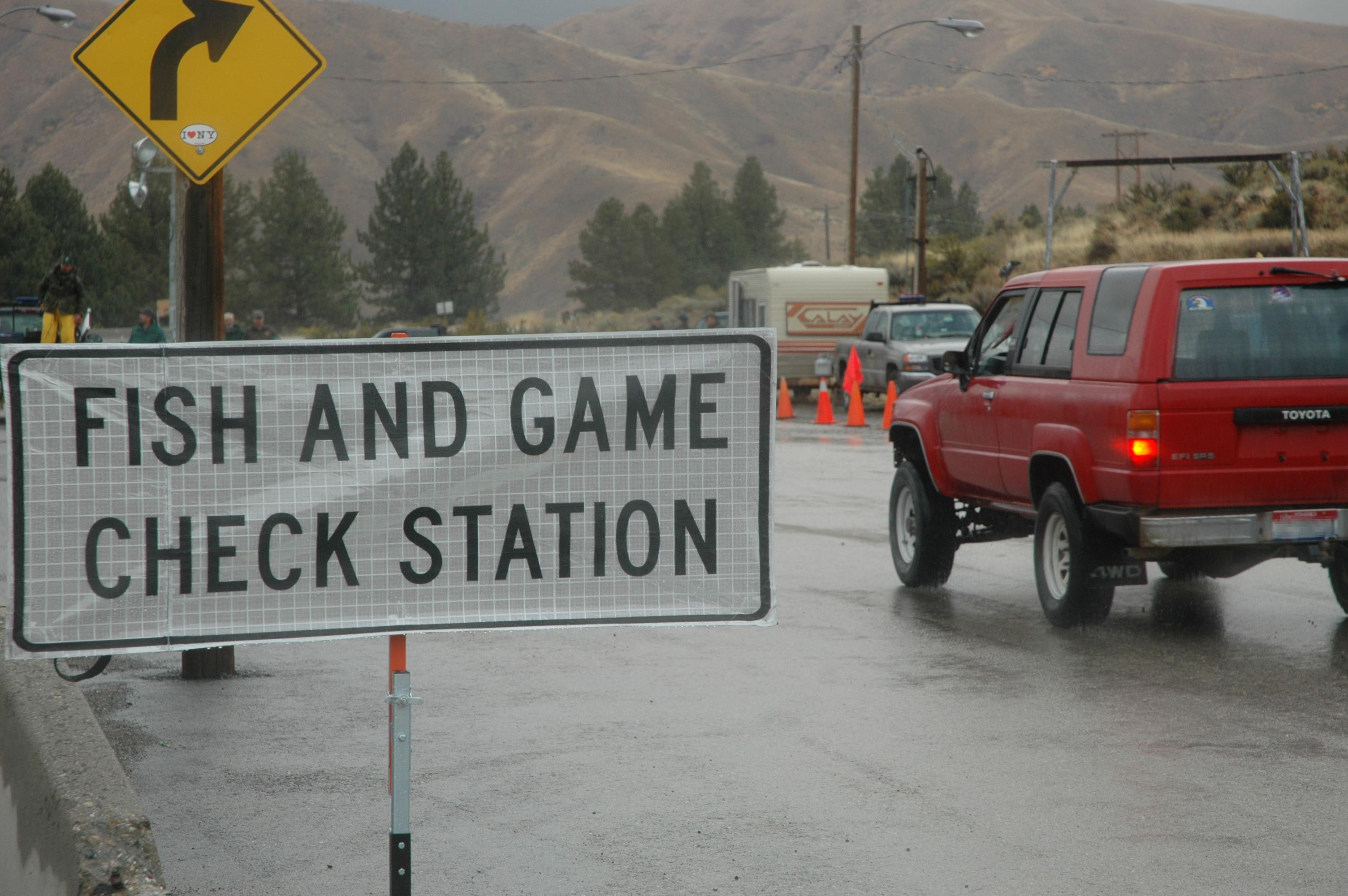Hunting seasons are here, and hunters will see Fish and Game check stations throughout the state. Remember all hunters, anglers and trappers must stop at Fish and Game check stations, regardless of whether they’ve harvested game.
Department employees and volunteers typically interview 10,000 to 20,000 hunters at check stations, and see up to 2,500 harvested animals.
“The primary goal is to get an immediate feedback on how the season is going,” said Brad Compton, Fish and Game’s assistant wildlife bureau chief. “Check stations are invaluable. Within a few weeks, we can put our hands on hundreds of animals, and that can tell us a lot about them.”
Biologists can determine the ages deer and elk harvested, take tissue samples to test for diseases, such as chronic wasting disease. CWD has never been detected in Idaho, but it is found in neighboring states.
Check stations also allow biologists to see the body condition of animals harvested to see how big-game animals are faring before heading into winter.
Hunters may be asked what areas they are hunting, and they can be assured the department is not giving away their favorite hunting spots. It’s another way to track what hunters are seeing and harvesting in different areas.
Although enforcement isn’t the primary focus of biological check stations, hunters can be cited for violating rules. Here are some reminders to make your check station visit pleasant, quick and efficient, and common mistakes to avoid:
- Failure to keep evidence of sex. Even in either-sex hunts, the head or other evidence of sex needs to be naturally attached to the carcass until you get it home. In hunts with point restrictions, the antlers must accompany the carcass.
- In seasons restricted to mule deer or white-tail deer only, proof of species must remain naturally attached. If you remove the head, you must leave the fully-haired tail attached.
- Failure to properly validate your tag. Make sure the notches for the correct day and month are fully removed from your tag immediately after you harvest the animal. The tag must be attached to the largest part of the carcass.
- Failure to have a proxy statement. If you’re transporting game for someone else, you must have a proxy statement.
Details on these rules and others can be found on page 100 (scroll down) of the Big Game rules.
It will save you and them time if the animal is easily accessible. It takes a few minutes to collect all the data we need, so feel free to shut off your vehicle and step out to stretch your legs.
Please use caution when pulling into and out of a check station. Keep an eye out for hunters and staff walking around the station, and be careful if you are pulling out onto a busy highway.
Hunters should also retain all usable meat from big game animals as required by law. A detailed description can be found on page 95 of the big game rules booklet. Hunters are responsible for keeping game meat from spoiling.
Chris Wright, Fish and Game’s assistant bureau chief of enforcement, said the most common way game meat spoils is hunters not skinning and cooling the carcass in a timely manner.
Wright said conservation officers at check stations use discretion when deciding whether to cite someone who has violated a rule, but “waste of game is one of the things we have the lowest tolerance for.”

